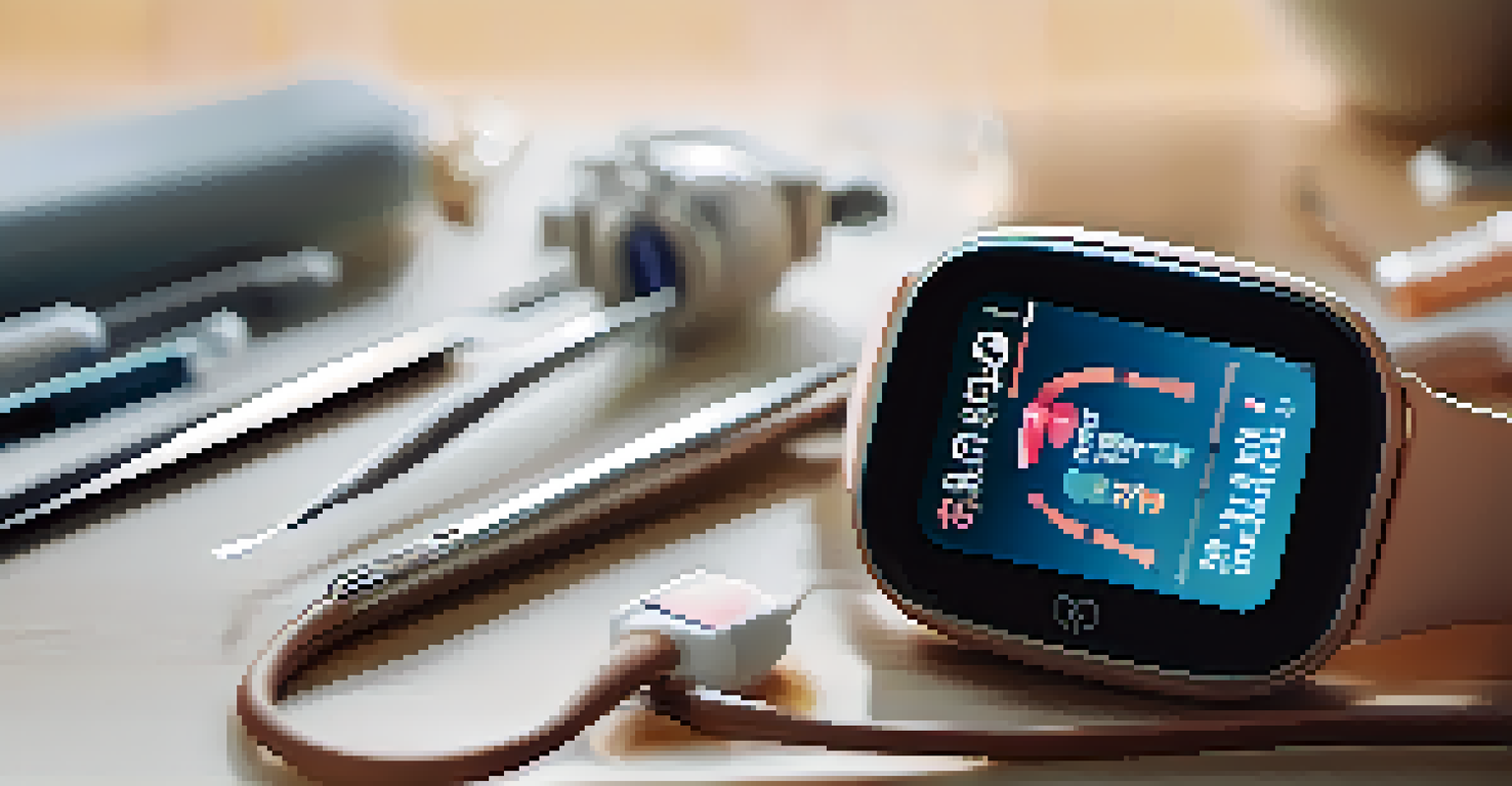The Importance of Time in Emergency Medical Situations

The Golden Hour: What It Means in Emergencies
The concept of the 'Golden Hour' refers to the critical time frame after an injury occurs, during which prompt medical intervention can significantly impact survival chances. For instance, in trauma cases, every minute counts as the body fights to stabilize itself. Delay in treatment can lead to complications, worsening the patient's condition.
Time and tide wait for no man.
Studies show that patients who receive care within this crucial hour have better outcomes than those who wait longer. Imagine a ticking clock in a race against time—every second represents a chance for recovery slipping away. This urgency highlights the need for rapid response from emergency services, which can be the difference between life and death.
By understanding the importance of the Golden Hour, both medical professionals and bystanders can act decisively when emergencies arise. This knowledge empowers individuals to make quick decisions, whether it's calling for help or administering first aid, thus enhancing patient survival rates.
Response Time: The First Step in Emergency Care
Response time is crucial in emergency medical situations, influencing the overall effectiveness of the care provided. The faster emergency responders arrive on the scene, the sooner they can assess the situation and provide necessary medical interventions. For example, in cardiac arrest cases, immediate CPR can double or triple the chance of survival.

Every minute wasted can lead to irreversible damage; therefore, emergency response teams are trained to minimize this time as much as possible. Imagine waiting for a bus that’s late when every second matters—this is the reality in medical emergencies. Quick mobilization and clear communication can drastically improve patient outcomes.
Golden Hour is Critical for Survival
Prompt medical intervention within the first hour after an injury can significantly improve survival chances.
Moreover, communities can benefit from understanding the local emergency response protocols, ensuring they know how to reach out for help swiftly. This preparation can make a significant difference in critical moments, reinforcing the idea that time is of the essence in emergency care.
The Role of Technology in Saving Time
Technological advancements have revolutionized emergency medical services, significantly reducing response times and enhancing patient care. For instance, GPS tracking allows emergency teams to navigate traffic efficiently, ensuring they reach victims as quickly as possible. Furthermore, telemedicine enables doctors to provide immediate remote consultations during emergencies.
In emergencies, every second counts.
Consider a scenario where a patient is experiencing severe chest pain; with technology, paramedics can share vital signs with the hospital en route, preparing the medical team for immediate intervention upon arrival. This seamless communication can shave precious minutes off treatment time, leading to better outcomes.
In addition, wearable health devices alert users to health crises before they escalate, prompting faster action. As technology continues to evolve, its role in emergency situations will only become more critical, reinforcing the importance of time in saving lives.
Community Awareness: A Key to Faster Response
Community awareness and education play a pivotal role in enhancing emergency response times. When individuals are informed about the signs of medical emergencies, they can act more quickly and efficiently. For example, recognizing symptoms of a stroke can lead to the swift activation of emergency services, significantly improving the patient's chances of recovery.
Training programs in CPR and first aid empower citizens to take immediate action while waiting for professional help. Think of it as a community safety net—when everyone is prepared, the entire community benefits from faster response times and improved outcomes.
Community Awareness Saves Lives
Educating the public about emergency signs and first aid can lead to faster response times and better patient outcomes.
Moreover, initiatives that promote public understanding of local emergency services can foster collaboration between residents and responders. A well-informed community not only saves time but also creates a supportive environment for those in need during critical moments.
The Psychological Impact of Time in Emergencies
The perception of time during emergencies can have significant psychological effects on both victims and responders. For patients, every second can feel like an eternity, increasing anxiety and fear about their fate. This emotional stress can affect their physical response, making it even more critical to minimize delays in care.
For first responders, the pressure of time can lead to stress and fatigue, impacting their decision-making abilities. Picture a firefighter racing against the clock to rescue someone trapped in a burning building; the urgency can weigh heavily on their shoulders. Training and support systems are essential to help them manage this pressure effectively.
Understanding these psychological aspects can improve training programs and support systems for emergency personnel and patients alike. By fostering a calm and supportive atmosphere, we can mitigate the negative effects of time pressure in emergency medical situations.
Time Management in Emergency Rooms
Effective time management within emergency rooms (ERs) is crucial to ensuring that patients receive timely care. Hospitals implement triage systems to prioritize treatment based on the severity of patients' conditions, ensuring that those in critical need are seen first. This organized approach helps optimize resource allocation and speed up patient care.
However, overcrowding can pose challenges, causing delays that may jeopardize patient outcomes. Imagine a busy restaurant where patrons are left waiting too long; similarly, when the ER is overwhelmed, even minor complaints can escalate. Hospitals continuously seek ways to streamline processes to minimize wait times and improve patient flow.
Technology Enhances Emergency Care
Innovations like GPS tracking and telemedicine streamline responses, reducing treatment times and improving patient care.
By focusing on efficient time management strategies, healthcare facilities can enhance their responsiveness and effectiveness. This commitment to timely care not only improves patient satisfaction but also saves lives in crucial situations.
The Future of Emergency Medical Response: Speed and Efficiency
Looking ahead, the future of emergency medical response will likely prioritize speed and efficiency even further. Innovations such as drones delivering medical supplies and AI-driven decision support systems are on the horizon, promising to revolutionize how we respond to emergencies. These advancements could significantly reduce the time it takes to provide critical care in urgent situations.
As we embrace these technologies, the goal will be to create a more interconnected emergency response ecosystem that minimizes delays. Just as a well-oiled machine operates smoothly, a coordinated response system can streamline care from the moment of an incident to the hospital.

Ultimately, the focus on time in emergency medical situations will continue to evolve, driven by advancements in technology, community preparedness, and effective resource management. By prioritizing time, we can enhance patient outcomes and save lives in emergencies.